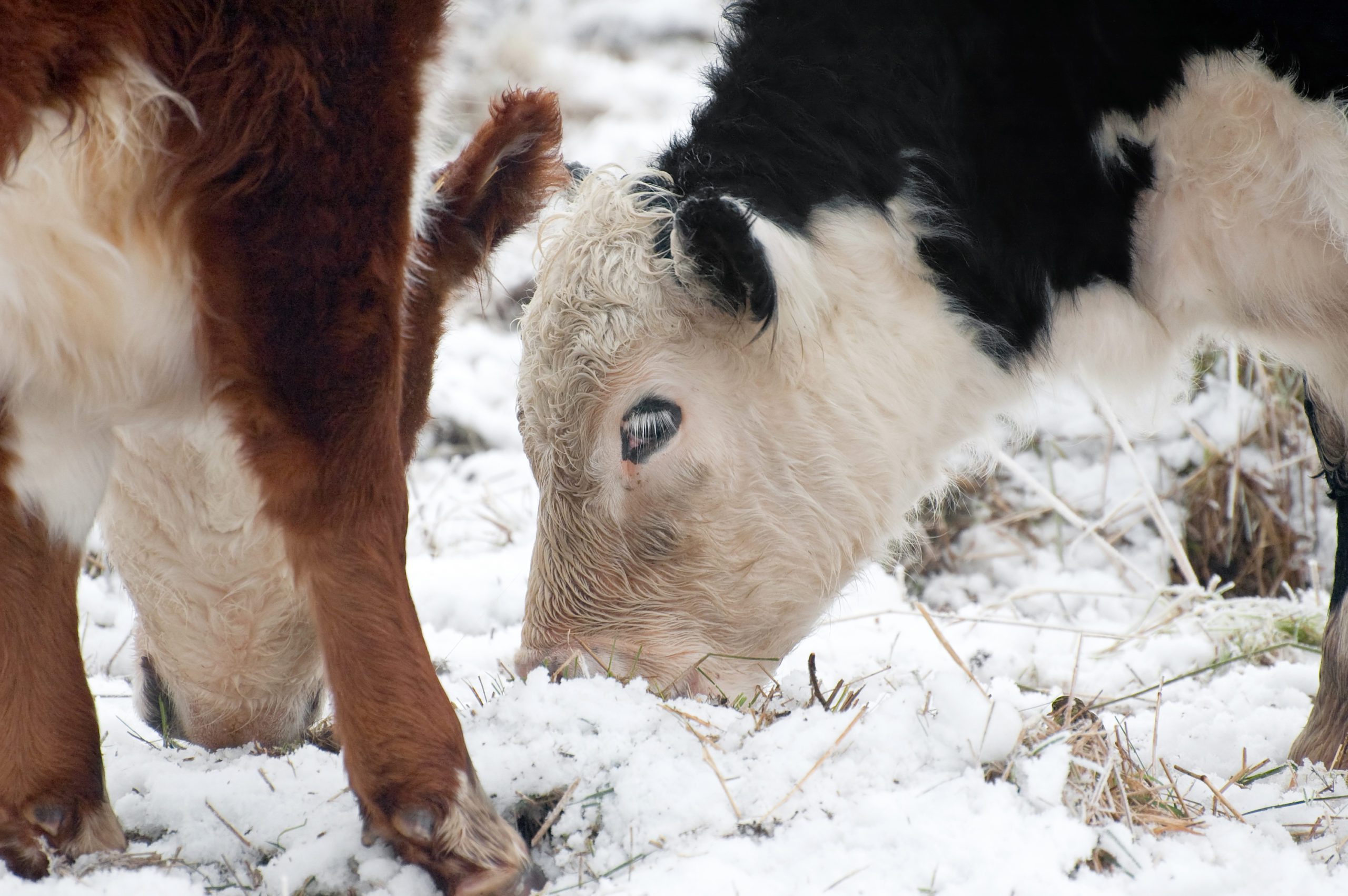
As fall begins to give way to winter, pasture grasses go dormant, pulling their nutrients into the roots for the long, cold months ahead. Stored hay starts to lose its nutritional potency as it ages. What is left behind, while still holding some nutrition, can lack greatly in an essential nutrient – Vitamin A.
Where vitamin A comes from
Vitamin A is found in abundance in lush, green grasses. It is converted from beta-carotene, a nutrient that is present in most leafy green plants. Plants and grasses that are not sufficient in chlorophyll (the green pigment found in plant life) will, in general, also be lacking in vitamin A.
Hay may contain high levels of vitamin A shortly after cutting, but these levels will begin to drop the longer hay is stored. The two biggest factors in the degradation of vitamin A in hay are temperature and light exposure.
The importance of vitamin A in the bovine diet
Much has been learned about the role vitamin A plays in the diets of bovines. As with humans, every system in the body depends on this nutrient at least to some extent. The liver stores vitamin A as retinyl ester; this converts to the active form retinol that is then easily accessed by the body as vitamin A. Unfortunately, these stores only last so long, necessitating consumption of forage and feed that contains vitamin A to address immediate nutritional needs and replenish reserves.
Digestion, growth and development, immunity, respiratory function, and reproductive function are all dependent on adequate availability of vitamin A.
Calves
In calves, vitamin A is vital for growth and development. It contributes to the normal ossification of bones and teeth, ensuring that the animal’s skeleton will mature properly. Ruminal development is dependent on adequate levels of vitamin A. In addition, the growth and function of nervous tissue requires optimal levels of vitamin A.
Breeding Animals
For cattle in their reproductive years, Vitamin A is essential to keeping soft tissue linings including those found in the reproductive tract supple. A vitamin A deficiency in cows can cause thickening of the uterine tissues, making implantation more difficult and can even lead to fetal resorption or abortion.
Bulls that do not receive enough vitamin A in their diets may encounter problems with spermatogenesis (the development of sperm in the seminiferous tubules of the testicles), decreasing sperm count and quality.
All cattle
The overall effects of vitamin A deficiency in cattle can be disastrous for animals of all ages. As with the lining of the uterus in cows, the epithelial lining of the rumen is dependent on vitamin A to maintain pliability. Pliability in the rumen allows it to properly absorb nutrients. If it becomes thickened and rigid, the papillae start to shrink and reduced surface area for absorption occurs. An unhealthy ruminal lining is also more difficult for colonies of microbes to populate, leading to other issues such as poor feed conversion and sub-acute ruminal acidosis (SARA).
The respiratory tract can also become more brittle in the absence of adequate vitamin A. This makes animals more susceptible to infections such as BRD and can decrease the lungs’ ability to absorb oxygen.
The eyes are especially susceptible to vitamin A deficiencies. A prolonged vitamin A deficiency will result in night blindness; corneal ulcers can develop, causing lasting damage, even if the deficiency is corrected.
Symptoms of vitamin A deficiency
Cattle will display a wide range of symptoms in the presence of a vitamin A deficiency. Calves may grow more slowly and be sicklier than those that are receiving enough vitamin A. They may also have difficulty transitioning from milk to forage.
In general, cattle of all ages often present with inappetence, poor gains, decreased feed conversion and low energy levels. Physically, swelling of the legs may be present, in addition to a rough hair coat and dull eyes.
Supplementing vitamin A
Luckily, vitamin A is incredibly easy for producers to supplement. Before adding vitamin A to the diet, however, it is important to find out how much vitamin A forage and other feeds may be providing. Cut hay, as mentioned above, can begin to lose its potency as it ages. It should be assumed that dormant winter pasture will not provide adequate levels of vitamin A.
Depending on the size and type of cattle operation, different methods to supply this nutrient can be used. In the feedlot setting, vitamin A can be mixed into the TMR or offered in blocks or lick tubs. Many commercial TMRs will already contain certain levels of vitamin A. Consulting with the facility’s veterinarian or nutritionist will help determine if there are gaps that need to be filled.
Cattle on dormant winter pasture do well with uninterrupted access to lick tubs that contain adequate levels of vitamin A. Loose vitamin and mineral supplements and blocks can also be used but may not be as compelling to animals as lick tubs.
Vitamin A deficiency can have detrimental consequences on the health of a herd, but it doesn’t have to. With proper supplementation throughout the winter months, cattle can thrive and continue to perform at their best.
